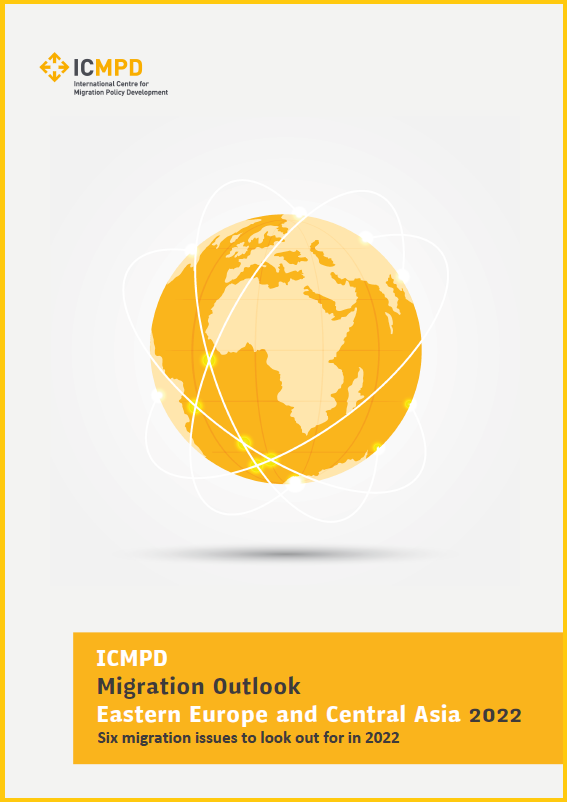ICMPD’s Migration Outlook on the situation in Eastern Europe and Central Asia (EECA) presents a brief analysis of migration and policy trends in the region and provides an outlook on developments and key issues to watch out for in 2022. The paper covers developments in the twelve EECA countries according to ICMPD’s geographic division: Armenia, Azerbaijan, Belarus, Georgia, Kazakhstan, Kyrgyzstan, Moldova, Russia, Tajikistan, Turkmenistan, Ukraine and Uzbekistan.
This Outlook highlights the most important and relevant trends in EECA without intending to cover all migration-related developments. The main goal of this publication is, therefore, to provide expert perspectives on how migration might evolve across the region in 2022, based on ICMPD’s regional office experience. In this regard, while migration trends in the region are largely impacted by geopolitical developments and challenges, and often triggered by geopolitical tensions and conflicts in the region and its surrounding areas, this paper focuses only on migration-related outlook for 2022.
In 2021, the COVID-19 pandemic continued to affect migration and mobility across the EECA region. Developments in Afghanistan with anticipated migration flows to Central Asian countries, the migration crisis at the EU-Belarus border, geopolitical tensions in areas of frozen and smouldering conflict (i.e. Nagorno-Karabakh, Donbas) and a border dispute between Kyrgyzstan and Tajikistan constitute acute and potential drivers of migration within the region and internationally. The year 2022 started with a sudden flare-up of protests in Kazakhstan amid growing fuel prices, along with a new cycle of the political crisis between Russia and Ukraine, or more broadly the Russian Federation and Western Europe, USA and NATO. While the impact of these events on the region’s current migration flows and/or cross-border movements has been limited so far, their actual implications and potential outcomes are yet to be seen.
The worldwide stock of migrants of EECA origin amounted to over 30 million in 2020, which represented an increase of 2.4 million compared to 2010. Close to 54% of EECA migrants are women, and this ratio has remained stable for the past 30 years. The region is also home to over 23 million migrants who mostly originate from within the region. In absolute terms, Russia is both the main origin and destination country with an immigrant stock of 10.8 million and an emigrant stock close to 12 million persons. Labour migration remains the most significant form of migration within the region, with regional flows forming rather tenable labour migration corridors from Central Asia towards Russia and from the Eastern Partnership countries and Belarus to the EU, in particular Poland, which hosts up to 85% of all migrants from Eastern Europe in the EU territory.
Please access the Outlook in English here.

